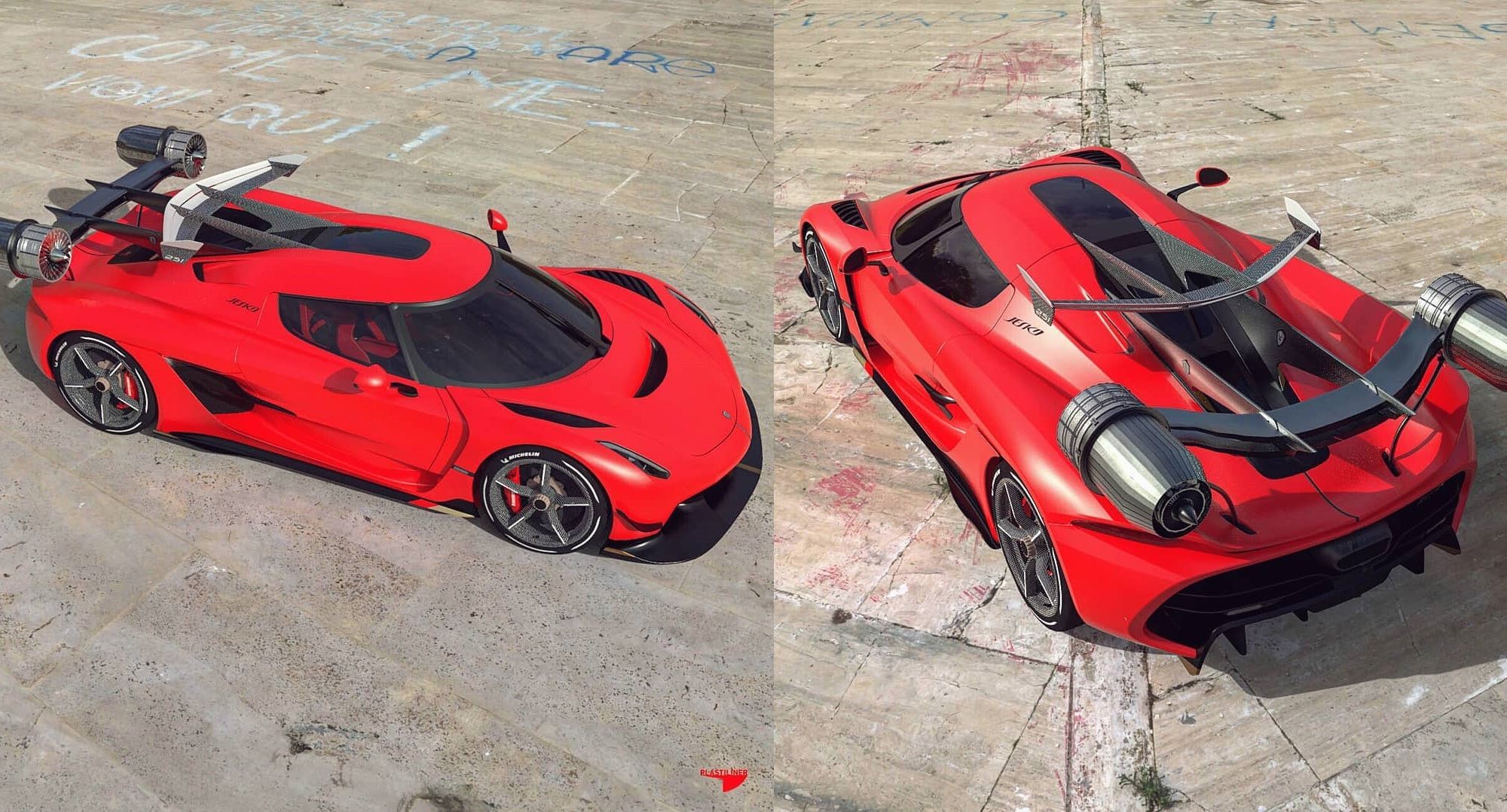Here’s an original idea that nobody thought about before: slapping the world’s hypercars with jet engines through pixel manipulation, just for the fun of it.
This might come as a surprise, but it’s not often that we get to see hypercars (or regular cars, for that matter) fitted with the kind of hardware you’d expect to see on Star Wars-inspired battleship. I mean, sure, Porsche did have a go at designing a starship for the latest Star Wars installment ‘The Rise of the Skywalker,’ but that’s a totally different story than simply attaching two jet engines on the back of one of the most revered hypercars out there. Instagram user @plastiliner had this crazy idea, and we’re applauding it.
Those Jet Engines Look Incredibly Cool on the Koenigsegg Jesko
Well, that’s due to the fact that the Koenigsegg Jesko itself looks incredibly cool. Of course, credit must also go to the designer because we’ve seen so many bad renderings on so many occasions in a context that wasn’t as demanding as actually making two jet engines look good on the back of a hypercar.
That doesn’t mean the eccentric change came naturally. You see, when Koenigsegg designed the Jesko, it went back to the drawing board because it wanted the hypercar to offer blistering on-track performance - those are actually Koenigsegg’s own words, by the way.
So, to serve that purpose, the Swedish carmaker’s designers came up with a new front splitter, a new rear diffuser, and a new boomerang-shape, double-profile active rear wing. The latter is by far the most spectacular component fitted to the Jesko (it also acts as an air brake, in case you were wondering), so it would have been a shame to see it completely gone to make room for the jet engines.
Luckily, the digital artist managed to keep the rear wing, albeit with slight modifications. As you can see, the arms attaching it to the car are now much smaller, and they’re positioned more towards the roof of the Jesko because the original wing’s arms are now tasked with holding the said jet engines.
Koenigsegg Has a Close Connection to the World of Aviation
After moving in, Koenigsegg kept the place’s significance alive and, at the same time, honors to this day the Squadron by placing a logo showing a flying ghost - the squadron’s insignia - on the engine bay of all Koenigsegg cars built in Angelholm. Which, by the way, are tested and tweaked on a former 1.7-kilometers (one-mile) runway that also supports a race track configuration when needed, thanks to its 50-meter (164-feet) width.
The Jesko is expected to hit 60 miles per hour form a standstill in 2.5 seconds and reach a top speed of 300 miles per hour. The hypercar can also generate over 1,000 kilograms (2,204 pounds) of downforce, so we guess it’s pretty fair to say that to take it to the next level you’d had to gift it with jet engines.

